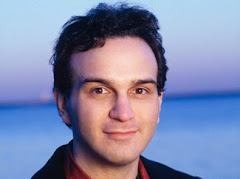Having missed Stanislav Kochanovsky's previous appearances with the MPO in ballet performances of Prokofiev's Romeo & Juliet, Adam's Giselle and Tchaikovsky's The Nutcracker, I was determined not to miss his concert of two mainstream Romantic German works in the shape of Mahler's Seventh Symphony and Wagner's Prelude to Die Meistersinger von Nürnberg.
The Seventh is consistently dubbed a "problem" symphony because, for all its attractiveness, the musical arguments do not always seem to hang together. Kochanovsky's solution was to go for a sane and measured approach in the first movement, whilst playing the middle three movements characteristically and making the triumphant fifth movement an exhilarating wild roller-coaster ride.
After the opening "oars" motif of the first movement, Kochanovsky encouraged tenor hornist Marques Young to play his doleful solo forte (as written in the score). Often, this solo is presented too apologetically and not like what Mahler called "a roar of nature". There was a broad nobility to the all-important march theme in the winds that followed. Kochanovsky ensured that tempo relationships in this huge first movement were always logical, with minimum manipulation of tempi, as each section segued quite naturally into the next. Tension throughout the movement was properly cumulative, meaning that Mahler’s climactic suspension at the coda unfolded as it should, without the need for additional agogic emphasis.
The second movement of the Seventh Symphony is a nocturnal march. The MPO hornists played the call and response motif to open the movement before the main march theme (with a rhythm from his Das Knaben Wunderhorn song "Revelge") was taken up by the orchestra. Colourful elements such as cowbells in the distance and warbling woodwind bird calls instilled the movement with a pastoral feel throughout, evoking comparisons to Rembrandt's painting The Night Watch.
Kochanovsky made the third central movement downright strange and spooky. Creative touches in orchestration punctuated this movement which was replete with various waltz tunes and Ländler. Whether it was the slurping sounds of the violins playing the melody with glissandi up to their highest notes, the swirling viola parts, the Bartok-pizzicati in the cello and double bass parts or the shrieking of trumpets and woodwinds, Kochanovsky characterized every oddity at each turn. After all, Mahler marked the movement Schattenhaft (shadowy).
Kochanovsky’s baton-less response to the second Nachtmusik’s Amoroso marking was to apply a simple sensuality whose fervour stood in stark contrast to the macabre mood in the previous movement. Here, Peter Danis’ warm violin solo supported by Csaba Körös' sensuous cello line lent a tenderness and style to Mahler’s gentle interlude, with the orchestra’s "plucked" section (mandolin, guitar and two harps) adding a squeeze of zest to temper the sweetness.
In the Rondo-Finale, Kochanovsky and the MPO truly shone. Kochanovsky’s compact, crisp conducting style helped create a forward momentum to the end, important in a movement with seven iterations of the Rondo theme. The MPO brass came into their own here. In particular, the guest solo trumpet (Sergio Pacheco) sounded especially magnificent in Mahler’s stratospheric writing. It was a thrilling ride to the end of the movement, with the percussion section creating an irresistible rhythmic drive. The exuberant final chord was met with rapturous, well-deserved applause. This technically and interpretatively superb performance of the Mahler Seventh definitely trumped the dismal 2015 MPO outing with Fabio Luisi previously.
Kochanovsky chose to close the concert with Wagner's Prelude to Die Meistersinger von Nürnberg, obviously recreating the sequence of the programme of its Dutch premiere with the Royal Concertgebouw Orchestra of Amsterdam on 2 October 1909 under Mahler himself. The Prelude was played in a grand and stately manner with rich and luscious string tone, which had been lacking in some recent MPO performances.
On this showing, Kochanovsky's star is deservedly on the rise, with appearances with top world orchestras like the Royal Concertgebouw Orchestra of Amsterdam, Orchestre de Paris and Russian National Orchestra for 2017/18. Perhaps it could be time for the MPO to consider Kochanovsky for its vacant music director post.
Thursday, 8 March 2018
Kochanovsky's triumphant Mahler 7
Subscribe to:
Post Comments (Atom)


















































No comments:
Post a Comment